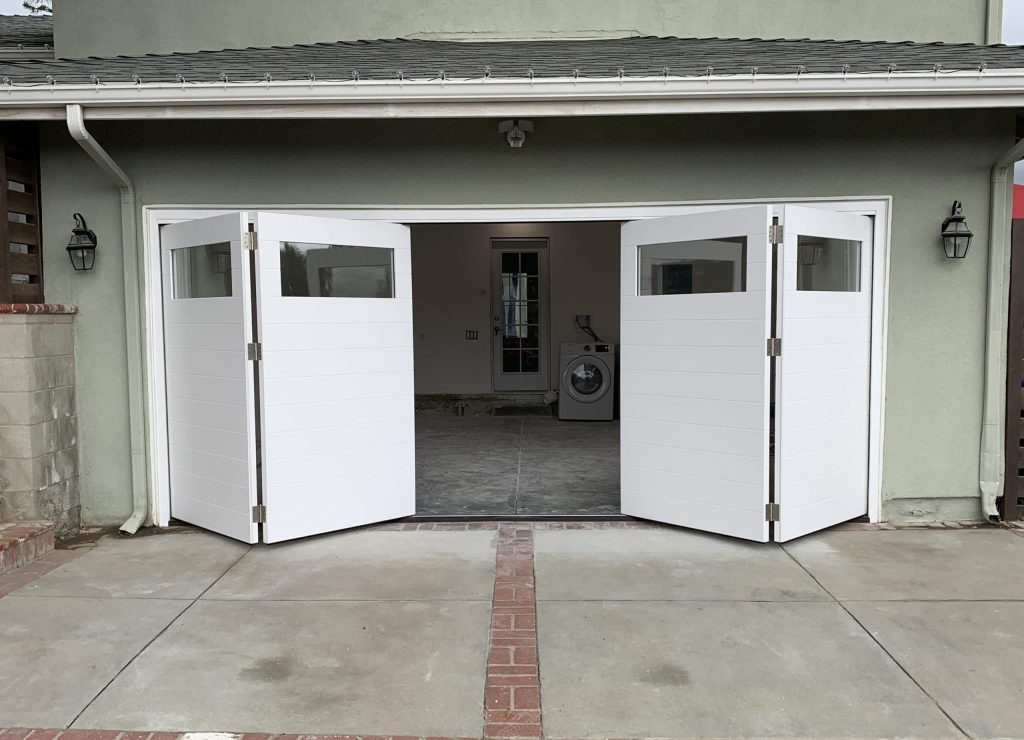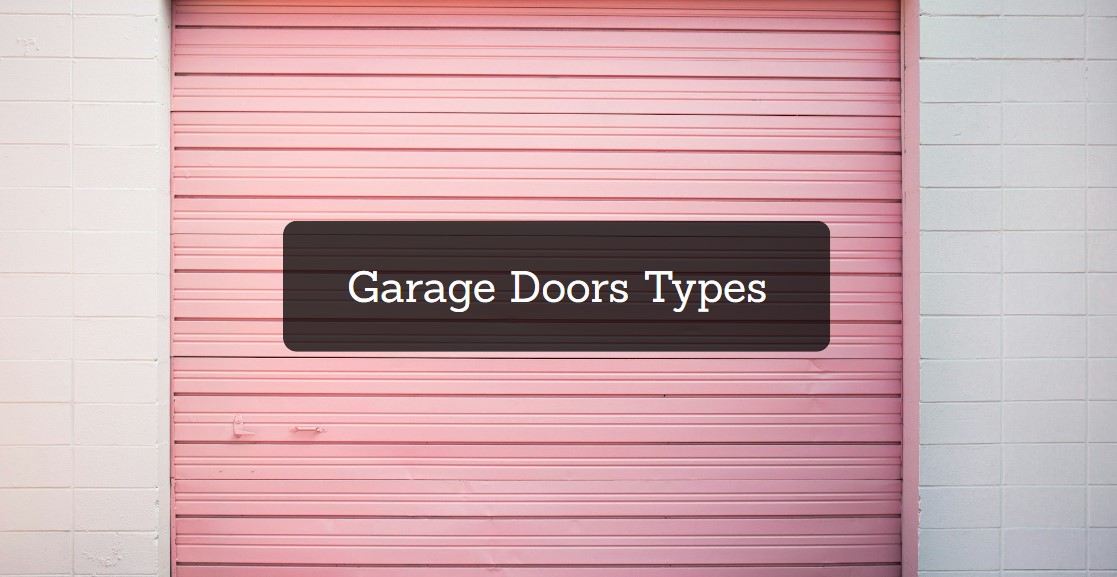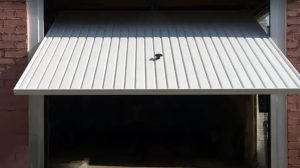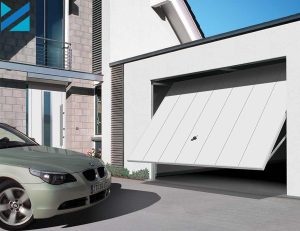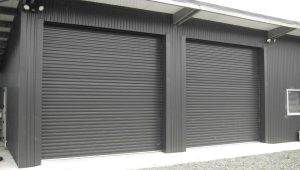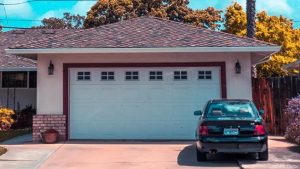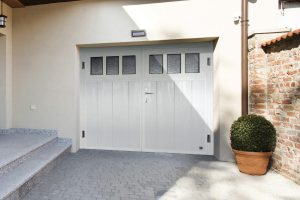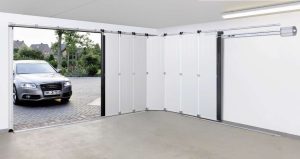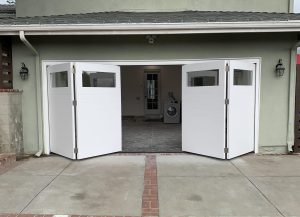Selecting the right garage door for your home involves considering various styles, each with its unique benefits and drawbacks. Here’s an overview of seven popular types.
And before you start, you can explore the Best Wood Look Paint for Garage Doors.
Canopy Garage Doors
Canopy garage doors are a specific type of overhead garage door system, distinguished by their unique design and operational mechanism. This comprehensive overview will delve into the features of canopy garage doors, followed by an examination of their pros and cons.
Features of Canopy Garage Doors:
- Canopy garage doors are a type of up-and-over door mechanism. They are named for the way the door panel protrudes outside, forming a ‘canopy’ when opened. Typically, about a third of the door extends outside, providing some shelter in this position.
- These doors are available in various materials, including steel, wood, fiberglass, and PVC. The choice of material affects their appearance, durability, and maintenance requirements.
- Canopy doors are operated manually or can be fitted with an electric opener. The manual operation involves a torsion spring at the top, which makes lifting the door easier. For automated operation, a conversion kit is usually required.
Pros of Canopy Garage Doors:
- The simplicity of the canopy door mechanism makes it reliable and easy to maintain. Fewer moving parts mean there’s less that can go wrong.
- When opened, the door does not require any extra space inside the garage, making it ideal for smaller garages where internal space is limited.
Cons of Canopy Garage Doors:
- Not ideal for larger garages, as the door size is typically restricted. This can be a significant limitation for those with larger vehicles or a need for wider access.
- The door extends outwards when open, which can be an issue in tight spaces or close to public pathways.
In conclusion, canopy garage doors offer a straightforward, space-saving solution for garage access, particularly suited to smaller garages and budgets. However, considerations regarding size limitations, security, and automation compatibility must be taken into account. Their simplicity in design and operation continues to make them a popular choice for many homeowners.
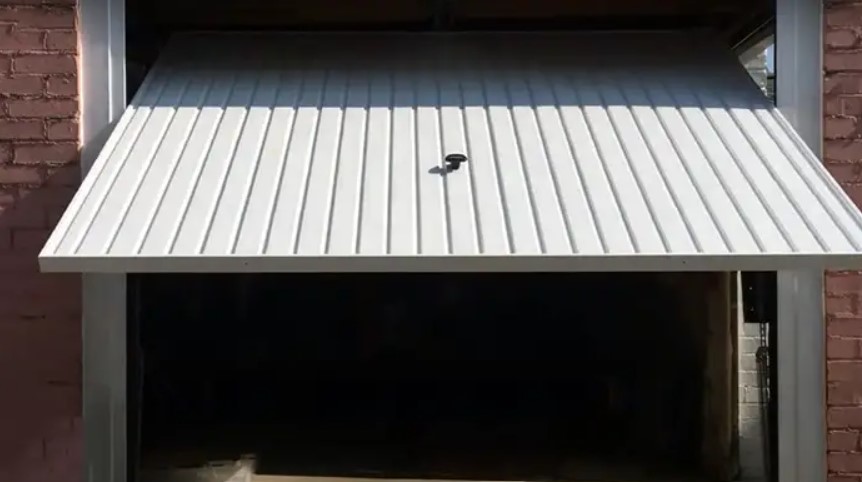
You may also like: What Material is Best for Garage Doors
Retractable Garage Doors
Retractable garage doors are a popular choice for many homeowners due to their functionality and design. These doors are known for their distinctive way of opening and closing, which sets them apart from other types of garage doors. In this comprehensive overview, we will explore the features, pros, and cons of retractable garage doors.
Features of Retractable Garage Doors:
- Retractable garage doors operate on a pivot system. They open by retracting into the garage along horizontal tracks. The door is suspended under the ceiling of the garage when fully opened.
- These doors come in various designs and materials, including steel, wood, fiberglass, and PVC. This variety allows for customization according to the aesthetic preferences and needs of the homeowner.
- Retractable doors are suitable for almost any garage size, making them a versatile choice. They can be made to fit wide or narrow openings.
- They are compatible with automatic opening systems. Homeowners can easily upgrade these doors with a motor and remote control system for automated operation.
Pros of Retractable Garage Doors:
- They require minimal space for operation, as they retract into the garage without swinging outwards. This feature makes them suitable for driveways with limited space.
- The design of retractable doors makes them particularly easy to automate, providing convenience and ease of use.
- With a variety of materials and designs, these doors can enhance the exterior look of a property.
Cons of Retractable Garage Doors:
- They can be more expensive than other types of garage doors, particularly when opting for high-quality materials and insulation.
- The installation of retractable garage doors can be more complex due to their mechanism, often requiring professional installation.
In conclusion, retractable garage doors offer a blend of functionality, aesthetics, and security. They are an excellent choice for homeowners looking for a door that saves exterior space and can be easily automated. However, considerations regarding cost, installation, and maintenance should be taken into account when opting for this type of door.
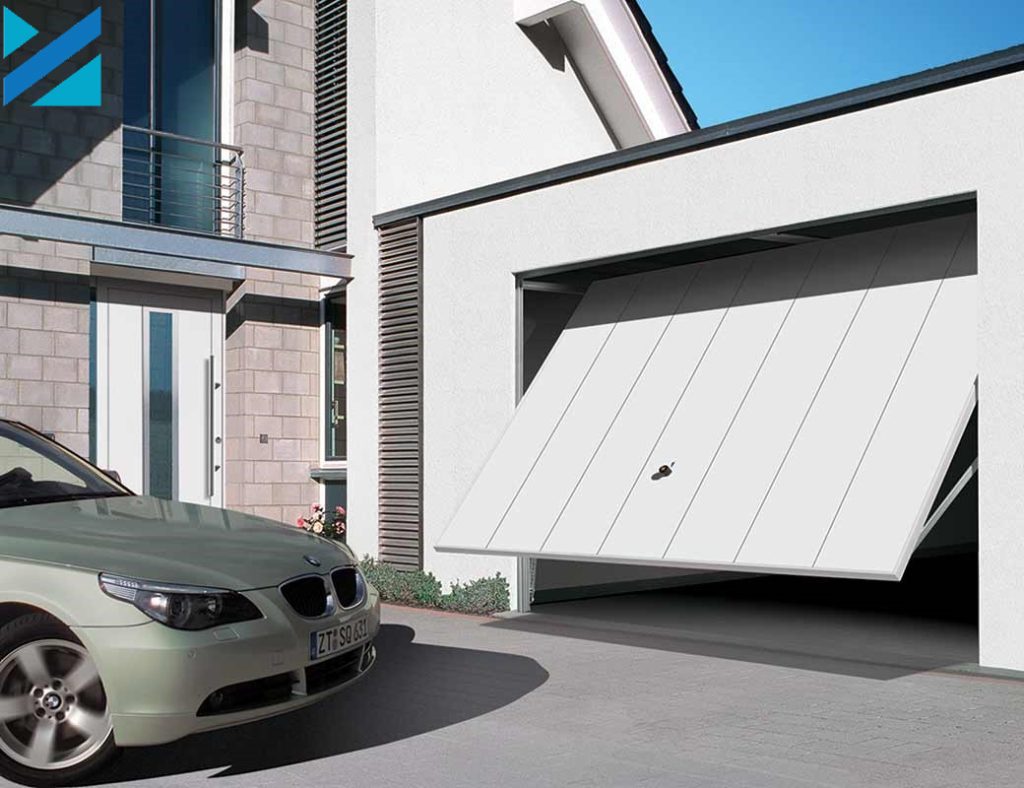
Roller Garage Doors
Roller garage doors are a popular choice among homeowners due to their unique design and functional advantages. These doors operate by rolling up or down vertically and gathering into a roll at the top of the door opening, unlike traditional garage doors that swing out or slide to the side.
Features of Roller Garage Doors:
- Roller garage doors are ideal for garages with limited space. Since they open vertically and do not swing outwards, they allow for maximum use of the driveway and the garage interior. This feature is particularly beneficial for short driveways or for those who use their garage for storage.
- These doors are available in various materials, including steel, aluminum, and sometimes PVC. Steel doors are known for their strength and security, while aluminum doors are lighter and resistant to corrosion. PVC doors, though less common, offer a lightweight and low-maintenance option.
Pros of Roller Garage Doors:
- They save space both outside and inside the garage, making them ideal for different types of properties.
- Automated systems make them easy to use, especially in bad weather when you don’t want to leave your car to open the garage.
- A wide range of colors and finishes allows these doors to suit various architectural styles.
Cons of Roller Garage Doors:
- They can be more expensive than traditional garage doors, especially when opting for high-quality materials or additional features like insulation.
- Installation can be more complex and might require professional help, which adds to the overall cost.
In summary, roller garage doors offer a modern, space-efficient solution for garage access, with the added benefits of improved security, energy efficiency, and convenience. However, these advantages come with higher costs and potential maintenance issues.
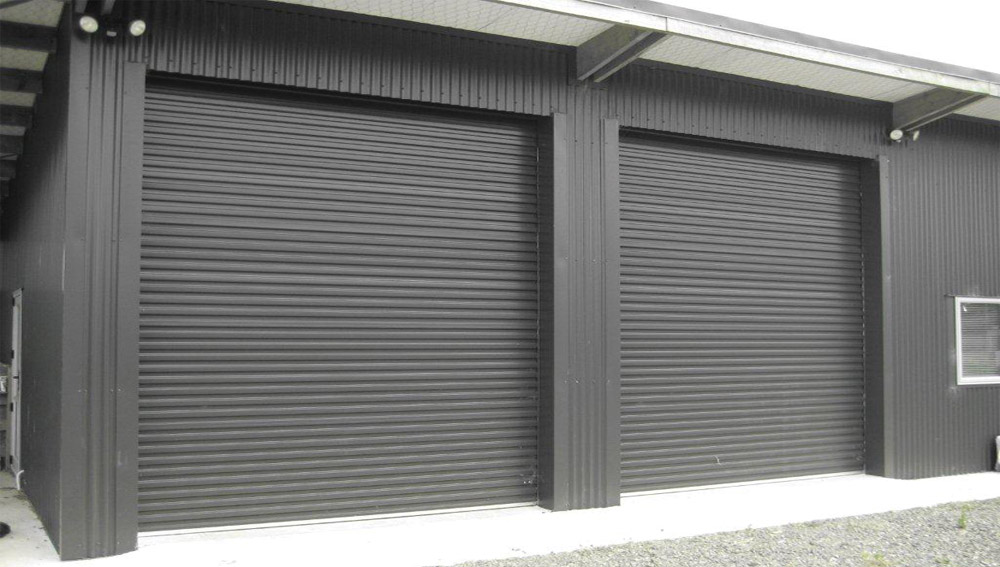
You may also like: How to Add Windows to Existing Garage Doors
Sectional Garage Doors
Sectional garage doors are a popular and modern solution for many homeowners, offering both aesthetic appeal and functionality. These doors are composed of panel sections that are connected with hinges. As the door opens and closes, wheels at the edge of each panel roll inside a vertical track on each side of the door opening.
Features of Sectional Garage Doors:
- Sectional doors are usually made from steel, wood, or fiberglass. They come in various designs, textures, and can be customized with windows and different colors. This variety ensures that homeowners can find a door that complements their home’s exterior.
- Since these doors open vertically and are suspended under the ceiling, they provide more space both inside and in front of the garage. This feature is particularly beneficial for short driveways.
- They provide excellent sealing against the weather. With the addition of rubber seals and insulation, these doors can keep out the cold, heat, and even reduce noise, which is beneficial for attached garages or homes in noisy areas.
Pros of Sectional Garage Doors:
- Ideal for small driveways or garages, as they do not swing outwards.
- Available in a range of materials, finishes, and styles to suit any home exterior.
- Generally more secure than other types of garage doors, as they are difficult to break through.
- Insulation options provide energy savings by maintaining temperature.
Cons of Sectional Garage Doors:
- They can be more expensive than other types of garage doors, especially when customized or automated.
- Installation can be more complicated, often requiring professional assistance.
- While low, they still require regular checks and maintenance to ensure smooth operation.
In conclusion, sectional garage doors offer a blend of style, efficiency, and functionality. They are an excellent choice for those looking for a modern, space-efficient garage door solution. While they come with a higher initial cost and complexity in installation and maintenance, the benefits of security, insulation, and space-saving design often outweigh these factors.
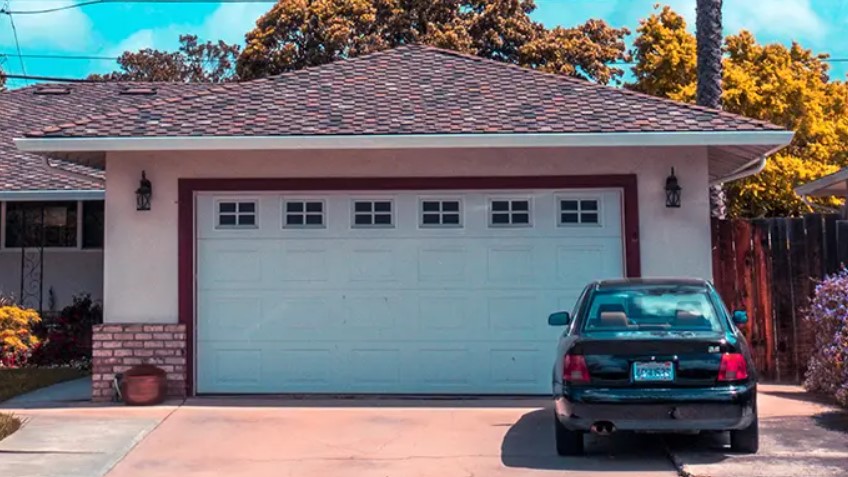
You may also like: 7 Best Apartment Garage Kits
Side-Hinged Doors
Side-hinged garage doors are a classic and traditional style of garage doors that swing open horizontally rather than moving vertically. They are reminiscent of barn or stable doors and offer a distinctive aesthetic that can enhance the appearance of a home. Typically, these doors are available in pairs and open outwardly, offering a unique operation compared to the more common overhead garage door.
Features of Side-Hinged Garage Doors:
- Side-hinged doors are available in a wide range of materials, including wood, steel, and composite. This variety allows homeowners to choose a material that best suits their home’s architecture and their personal preferences. Wooden doors, for instance, offer a classic and rustic appearance, while steel doors provide modernity and strength.
- These doors can be customized in terms of size, color, finish, and window options. This flexibility allows homeowners to create a door that perfectly matches their home’s exterior.
- One of the key features of side-hinged doors is the convenience they offer, especially when only partial access is needed. This is particularly useful for those who use their garage for storage or as a workshop, as it allows easy access without having to open the entire door.
Pros of Side-Hinged Garage Doors:
- These doors offer a classic and elegant look that can enhance the curb appeal of a property. They are particularly well-suited to traditional or country-style homes.
- The simple operation of swinging open and closed makes them user-friendly, especially for those who might find lifting a traditional overhead door challenging.
- Depending on the material, side-hinged doors can be relatively low maintenance. For example, composite materials may not require as much upkeep as wood.
Cons of Side-Hinged Garage Doors:
- These doors swing outward, which requires clear space in front of the garage. This can be a disadvantage for homes with limited driveway space.
- While manual operation can be a pro in certain situations, it can also be a con for those who prefer the convenience of an automatic door opener.
In conclusion, side-hinged garage doors offer a unique combination of aesthetics, customization, and ease of use, making them a viable option for many homeowners. However, considerations regarding space, manual operation, weather sealing, cost, and security should be taken into account when deciding if this type of door is the right choice for a specific home.
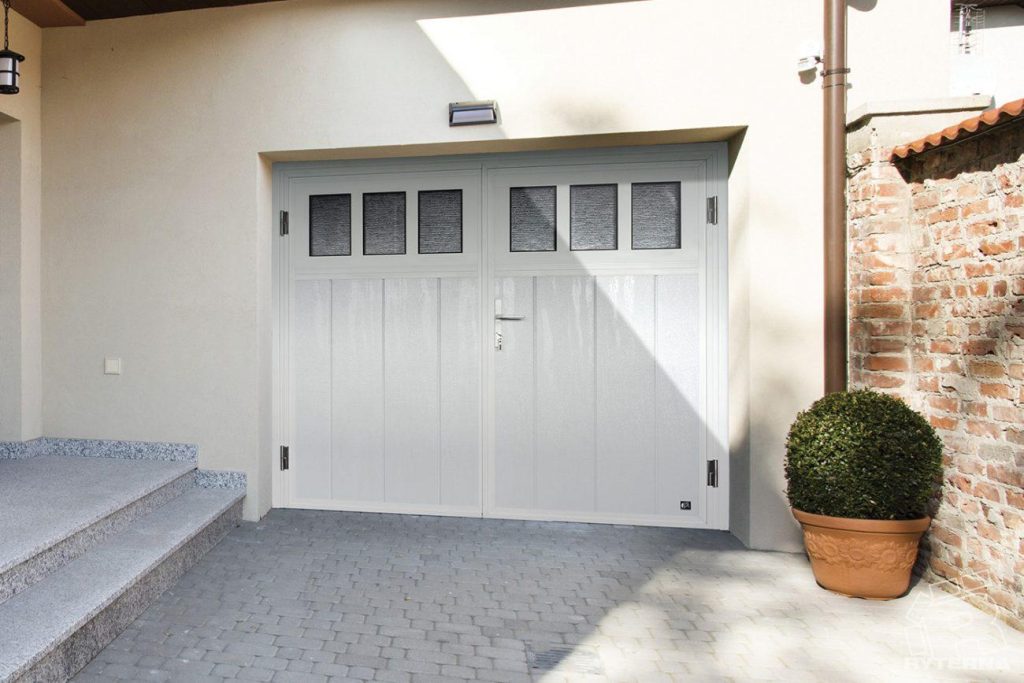
Side Sliding Garage Doors
Side sliding garage doors, also known as sectional side sliding or lateral sliding doors, represent a unique and functional design in the realm of garage doors. Unlike traditional overhead doors, these doors operate by sliding horizontally along the garage wall, offering a distinctive set of features, advantages, and disadvantages.
Features of Side Sliding Garage Doors:
- The most notable feature of side sliding garage doors is their mode of operation. They consist of several panels connected in a sectional manner, sliding horizontally along tracks fitted to the garage’s side walls. This design is particularly beneficial for garages with limited headroom or where a traditional overhead opening is not feasible.
- These doors are available in a range of materials, including steel, aluminum, wood, and composite materials. The choice of material can influence the door’s appearance, durability, insulation properties, and maintenance requirements.
- Side sliding garage doors offer considerable scope for customization. They can be tailored in terms of size, color, finish, and panel design, making them adaptable to various architectural styles. Some models also incorporate glazing options for natural light and aesthetic appeal.
- Many side sliding doors come with good insulation, thanks to the possibility of integrating thicker panels and better sealing. This feature is particularly beneficial for energy efficiency, especially in garages used as workshops or living spaces.
Pros of Side Sliding Garage Doors:
- They don’t require ceiling space, making them ideal for garages with low ceilings or where overhead space is used for storage.
- A partial opening feature allows for easy pedestrian access without the need to fully open the door, which is convenient for quick entries and exits.
- Offers a wide range of design options, easily blending with various architectural styles.
- Depending on the material, these doors can be highly durable and require minimal maintenance.
Cons of Side Sliding Garage Doors:
- They can be more expensive than traditional overhead garage doors, especially if customized or automated.
- The installation process is generally more complex and time-consuming, requiring professional assistance.
- They require sufficient lateral wall space to accommodate the door’s width when open.
In conclusion, side sliding garage doors offer an innovative and practical solution for many homeowners. Their unique design and operational features make them an excellent choice for specific architectural and functional requirements.
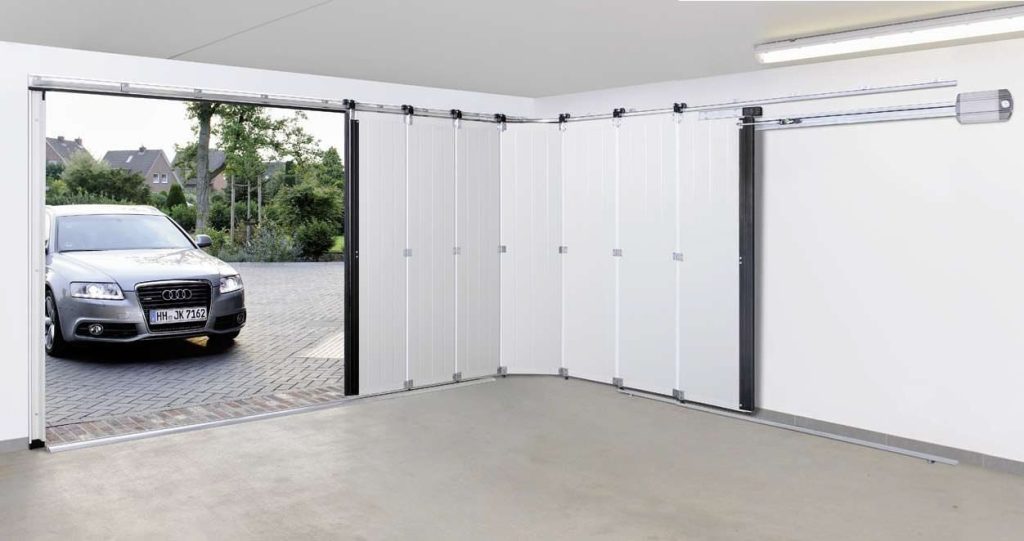
You may also like: 15 Best Garage Birtday Gifts for Guys
Bifold Garage Doors
Bifold garage doors, also known as folding garage doors or bi-folding doors, offer a unique and versatile solution for residential and commercial garages. These doors are characterized by their distinct folding mechanism, which allows them to open by folding back in sections or panels. Unlike traditional overhead rolling garage doors, bifold doors provide a different aesthetic and functional approach.
Features of Bifold Garage Doors:
- Bifold doors consist of multiple panels connected by hinges. When opened, these panels fold back on themselves, reducing the amount of space needed for the door to operate. This folding action can be either manual or motorized.
- They are typically made from a variety of materials including wood, steel, aluminum, or a combination of glass and metal. The choice of material often depends on the desired aesthetic, insulation properties, and budget.
- Bifold doors offer high levels of customization. Homeowners can choose the number of panels, type of material, color, finishes, and even incorporate glass panels for natural light.
- Their folding mechanism makes them ideal for garages with limited space. They do not require additional headroom like traditional overhead doors and can be a great option for garages with high ceilings or unusual shapes.
Pros of Bifold Garage Doors:
- Bifold doors offer a modern, sleek look. They can significantly enhance the visual appeal of a property.
- Since they fold rather than rolling up, they are ideal for garages with limited space. This feature is particularly beneficial in urban areas or for properties with unique architectural designs.
- The ability to customize these doors in terms of size, material, and design allows for a great deal of flexibility to match the aesthetic of any home or building.
Cons of Bifold Garage Doors:
- Bifold doors can be more expensive than traditional garage doors due to their complex mechanism and the high-quality materials often used.
- The installation of bifold doors can be more complex, requiring professional installation. This complexity can add to the overall cost.
- They may require more maintenance, especially if they have multiple moving parts and hinges that need regular lubrication and checks.
In conclusion, bifold garage doors present a unique and stylish alternative to traditional garage doors, offering aesthetic appeal and space-saving benefits. While they tend to be more expensive and might require more maintenance, their durability, customization options, and functional advantages make them a worthy consideration for homeowners and commercial property owners looking for a modern and efficient garage door solution.
